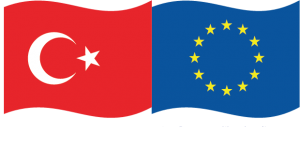Switzerland
Summary
Switzerland has an extremely well-marked and maintained system of walking routes, which in previous years gave access from the river-bottom villages to the summer pastures on the mountain shoulders, and over the passes to Italy and France. The Via Francigena is waymarked as route 70 from the French border to the Grand St Bernard Pass, which is only open to walkers from end May – October. At other times of the year, travellers can pass by bus through the tunnel.
http://www.wanderland.ch/en/routes/route-070.html
Detailed Description
Switzerland is a federation of cantons, each of which has its own parliament and legal system. The Via Francigena or Frankenstrasse crosses the two cantons of Vaud (capital Lausanne) and Valais (capital Sion). It runs through a variety of landscapes and is without doubt one of the most spectacular pilgrims’ paths in Europe. The route enters Switzerland at the Sainte-Croix pass and runs down to Lausanne and Lac Leman. From Lausanne, it runs through the vineyards of Lavaux to the bend in the Rhone. From the ancient city of Octodurus /Martigny, it winds through the narrow pass cut by the wild waters of the Drance to climb up the northern slopes of the Great St Bernard-Pass. From the Sainte-Croix pass to the Grand St Bernard, the height gained is 630m, over 215km in 13 stages.
The Grand St Bernard pass is snow-covered until end May, although the road is often bulldozed clean before then. So the trekking season over the pass is from end-May to October.
History
Switzerland has a complicated history of interaction between cantons cut off from each other by mountain ranges and often with differences of religion, language and custom. It was frequently split between Burgundians and German princes but became a confederation of cantons from the late medieval period. The Reformation resulted in external and internal wars as some cantons became Protestant. After Napoleon’s conquest, a republic was declared; then, from 1848, the Confederation of cantons was re-established.
Today three languages (German, French and Italian) are recognised at the national level but a local language Romansh is still in use in some cantons. The route runs through only the French-speaking areas. Although some cantons were once exclusively Protestant or Catholic, nowadays the countryside tends to be Catholic, with many small chapels, and the towns Protestant.
The Latin name of Switzerland, Helvetica, is often used to avoid having to translate the country name into different national languages – for example on the currency.
Websites and Maps
The Via Francigena is waymarked as route 70 and a special Swiss map is devoted to it. http://www.wanderland.ch/en/regional-routes/route-070.html
Other routes in Switzerland
http://www.via-alta.com/fr/








